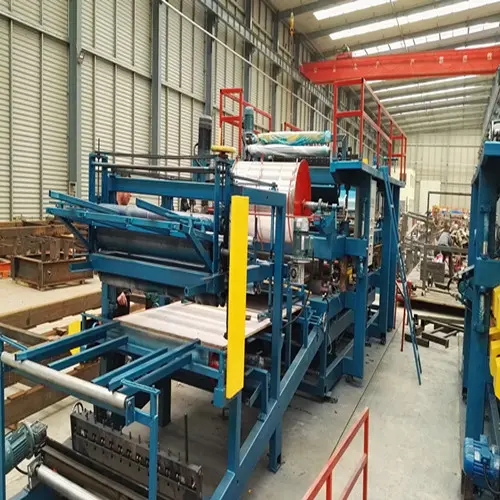
Understanding C-Channel Wall Angle Cold Roll Forming Machines
In the construction industry, the efficiency and precision of manufacturing materials are critical determinants of project success. One of the innovative tools that have transformed how structural components, particularly C-channel wall angles, are produced is the cold roll forming machine. This article explores the mechanics, benefits, and applications of the C-channel wall angle cold roll forming machine, highlighting its significance in modern construction.
What is Cold Roll Forming?
Cold roll forming is a manufacturing process that involves the continuous bending of sheet metal strips into desired shapes at room temperature. Unlike traditional metal forming processes, cold roll forming uses a series of rollers to incrementally shape the material. This method results in high-precision components with improved structural integrity and reduced material wastage.
The C-Channel Wall Angle
C-channels are versatile structural components characterized by their C shape. They provide support and connect various elements in construction projects, including walls, ceilings, and roofing systems. The wall angle, specifically, offers essential anchorage for drywall and other building systems, ensuring stability and alignment.
The Role of the Cold Roll Forming Machine
The C-channel wall angle cold roll forming machine automates the creation of C-channel profiles from flat metal sheets. The machine feeds the metal strip through a series of rollers, gradually shaping it into the C-channel profile while allowing for various gauges and dimensions. Key components of this machine include
1. Decoiler Unwinds the metal coil for the roll forming process. 2. Roll Former The heart of the machine where the actual bending happens. 3. Cutting Mechanism Sections the formed C-channel to the required lengths. 4. Control System Allows operators to adjust parameters for precision production.
Benefits of Cold Roll Forming C-Channels

1. Cost-Effectiveness The elimination of manual labor and reduced waste make cold roll forming an economical choice for producing C-channels. As a result, companies can achieve higher profit margins.
2. Precision and Consistency Automated processes ensure uniformity in dimensions and quality, which is crucial in construction where structural components must fit together perfectly.
3. Material Efficiency Since the process uses thin sheets of metal and involves minimal wastage, it is more sustainable compared to traditional manufacturing methods.
4. Versatility Cold roll forming machines can produce a wide range of profiles and sizes, making them ideal for various construction applications. Adjusting the rollers can create multiple C-channel configurations without needing extensive machine retooling.
5. Increased Strength Cold-formed metal displays superior strength characteristics compared to hot-formed metal, largely due to the work hardening that occurs during the forming process.
Applications in the Construction Industry
C-channel wall angles produced through cold roll forming have numerous applications in construction. They are used in
- Framing Systems Essential for creating sturdy wall frames and load-bearing structures. - Suspended Ceilings Provide support for ceiling grids, ensuring their stability. - Roofing Systems Serve as structural support for various roofing configurations, from commercial buildings to residential homes. - Electrical Conduits and Support Systems Facilitate the running of electrical systems through walls and ceilings.
Conclusion
The C-channel wall angle cold roll forming machine represents a significant advancement in construction technology. By streamlining the production of structural components, this machine enhances efficiency and precision, ultimately leading to higher quality builds at reduced costs. As the construction industry continues to evolve, the role of cold roll forming machines will undoubtedly become even more critical in meeting the demands of modern architecture and sustainability. Investing in such technology is not just a trend—it is a step toward the future of construction engineering.